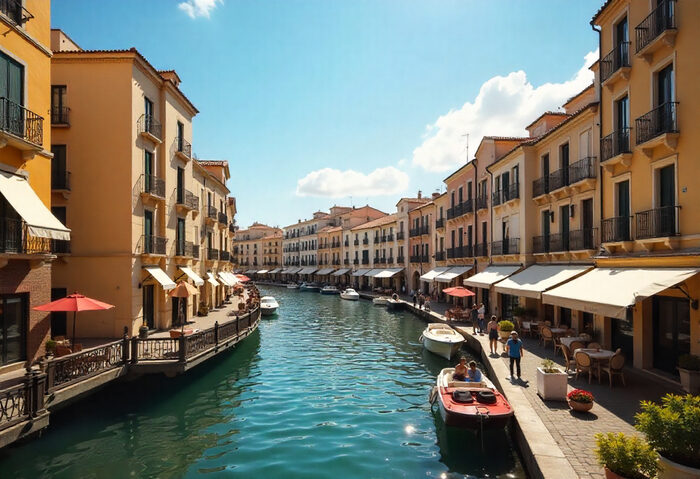Published on
November 15, 2025

Spain is experiencing a powerful expansion of its premium visitor market as Japan joins the United States, Australia, Mexico, Colombia, Morocco, the United Kingdom and China in driving a new wave of high-spending travel demand. This growth is fueled by rising interest in luxury travel experiences, a surge in business tourism linked to global corporate activity, strong momentum in cultural attractions across major cities and a sharp increase in high-value retail spending. Together, these long-haul and emerging markets are reshaping Spain’s tourism landscape by boosting daily expenditure, strengthening off-season travel and elevating the appeal of urban destinations such as Madrid and Catalunya.
These high-value visitors predominantly travel from long-haul markets such as the United States, Japan and Australia, while additional momentum is emerging from Mexico and Colombia. Their preferences consistently favor major urban destinations—especially Madrid and Catalunya—where short, high-intensity trips are often motivated by business engagements, cultural exploration and premium leisure activities.
The profile and behavior of this segment are based on detailed microdata from Spain’s monthly Tourist Expenditure Survey. For classification purposes, premium visitors are defined as travelers who spend more than triple the average daily international expenditure. While their stays are typically less than half the length of the average visitor, they clearly avoid Spain’s traditional high summer season, creating steady demand between March and June and from September through December.
Shifting Preferences Show Post-Pandemic Transformation
The premium segment reflects sharply defined travel habits shaped by income, lifestyle and shifting consumer values. The majority belong to upper-income brackets and often hold senior corporate roles. Their travel motivations differ notably from the broader international market, which continues to focus heavily on sun-and-beach holidays.
Business travel and cultural experiences remain dominant drivers among these high-spending travelers. However, post-pandemic behavior has accelerated interest in gastronomy, wine-focused excursions and, to a growing degree, nature-based activities. This blend of lifestyle-driven travel has contributed to the segment’s stability during the recovery phase.
Urban tourism has also expanded significantly within this niche during 2023 and 2024. Spain’s major cities continue to enhance their global competitiveness through cultural programming, new experiences and improved accessibility. These strengths have allowed the premium segment to grow even while maintaining a relatively small share of total visitors. Despite their shorter stays, their spending power has become a strategic asset for tourism development and long-term planning, especially during Spain’s non-peak months.
Hotel Dominance, Package Travel and Evolving Repeat Patterns
Premium travelers show overwhelmingly strong preferences for hotel accommodation. Recent analysis indicates that 92% chose hotels, an increase from pre-pandemic levels and a margin far higher than the rest of the international market. Package travel also retains stronger relevance for this segment, with 35% opting for organized packages compared with just 18% among all other foreign visitors.
Repeat visitation patterns reveal a nuanced form of loyalty. About 63% of premium visitors had previously traveled to Spain, compared with 79% of the broader visitor base. Yet only 28% had made more than ten trips, significantly lower than nearly half of the general market. This suggests that high-value travelers are loyal but not habitual; they respond more actively to new cultural, gastronomic, and business opportunities rather than routine leisure motivations.
Premium Tourism Versus High-Spending Retail Tourism
The analysis also differentiates premium visitors from high-value retail travelers—often referred to as “shopper tourists.” While both groups spend well above average, shopper tourists triple the typical expenditure specifically in retail categories such as fashion, jewelry, artisanal goods and specialized gifts.
This retail-focused segment surpassed its 2019 performance by 1.8% in 2024. In the same period, Spain recorded a 12.8% increase in total international arrivals. Retail spending has grown exceptionally fast, with nominal expenditure rising 31% since 2019, reflecting a nationwide boost in destination spending.
The United States retains its position as the largest source of retail-driven high spenders, followed by Morocco, Mexico and the United Kingdom. Colombia and China have also gained traction, though China’s recovery continues at a more measured pace relative to other long-haul origins.
Japan’s growing presence alongside the US, Australia, Mexico, Colombia, Morocco, the United Kingdom and China is strengthening Spain’s premium tourism surge. This combined long-haul demand is fueling strong growth in luxury travel, business trips, cultural attractions and high-value retail spending.
Together, these trends signal a broadening and diversifying base of high-value tourism in Spain. The convergence of cultural appeal, gastronomic prestige, urban vibrancy and premium experiences positions Spain as a leading global destination for travelers willing to invest more deeply in short, high-quality trips.

